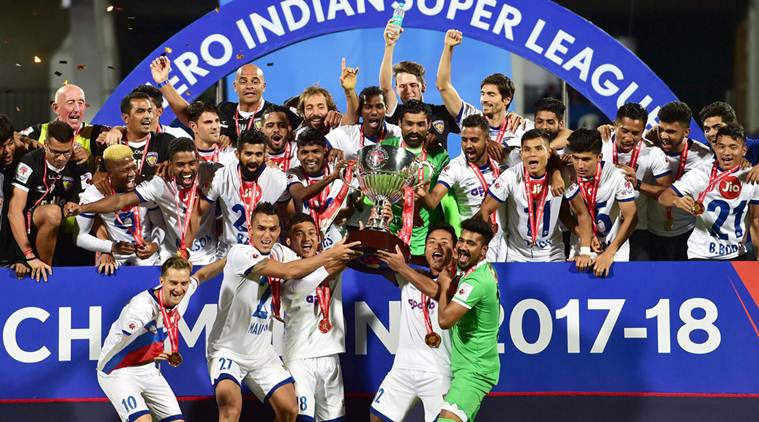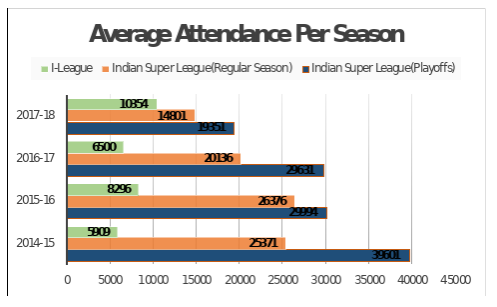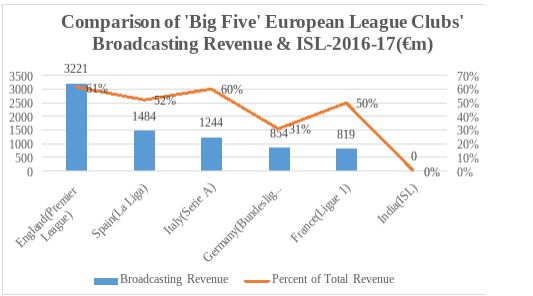Featured
Decoding the ISL's role in the future of Indian Football

The life of an Indian football fanatic is not at all easy. He is always in a state of a puzzle, perplexed as to what shall be the future of football in India. The appraisals and hopeful words of the superstars of world football give the Indian football fanatics a hope to dream. Indian football was ever evolving with the rebranding of National Football league (NFL) to I-League in 2007, the introduction of the Indian Super League (ISL) in 2014 and the inauguration of the Indian Super Cup in 2018 to celebrate an ultimate winner, scrapping the historic Federation Cup.
NFL, the first professional league in India, was founded way back in 1996 which did not last long. NFL was re-launched and rebranded as the I-League in 2007 due to a sharp decline in popularity and clubs going defunct due to financial woes. “Football is one of the most popular sports in the world. Unfortunately, in India, it hasn’t got its financial due or gained advertisers’ attention,” once said the Sikkimese Sniper, Bhaichung Bhatia. ISL came with a lot of financial backings, investments, advertisers, celebrities and most importantly, a plethora of hope. ISL started in 2014 with a vision for India to become a global football power and qualify for the 2026 FIFA World Cup. I-League and ISL both became the joint top divisions for professional football in India since 2014.
The ISL as a crowd-puller
ISL had initially lured in a considerable number of spectators to the stadium with the amalgamation of football with glamour. As the years passed, spectators, coming to the stadium decreased (the exception being the second season). Contradicting the ISL, Hero I-League has seen a 58% increase in in-stadia attendance in 2017-18 from 2016-17.
 Source: WorldFootball.net
Source: WorldFootball.net The fifth edition of ISL did not have an opening ceremony which had been a permanent fixture for the first four editions making it a more severe affair rather than a glamorous show. 2018-19 will see ISL and I-League being run in parallel and ISL to be played for an increased duration of six months.
Indian men football team has been lurking in the 150 regions in FIFA rankings for long and even slipped to 173 in 2015. Two years since the inception of the ISL, fortune seems to have changed for the Indian football in the right direction. India rose to 137 in 2016 and achieved its best FIFA ranking since February 1996 as they claimed 96th position in 2017.
Many experts regarded ISL to be behind India’s success. "Since the ISL started, the Indian national team has gone from about 170th to 100th in the FIFA rankings, and Stephen Constantine has done a terrific job. I think that the ISL has played a part in it" Steve Coppell said when working for Jamshedpur FC as a manager.
Even former Aizawl FC coach heaped praise on the ISL for making football what it is in the country today. A few days after Aizawl FC knocked Chennaiyin FC out of the Indian Super Cup 2018, coach Santosh Kashyap said, “One of the best things to happen to Indian football is the ISL. The level of the game has risen. Money has flown in, and marketing has improved. Infrastructure and ground conditions have also been enhanced.”
Many also believe India’s ranking improved immensely due to a cunning ploy by the AIFF. The ranking system which FIFA used till 2018 had many flaws. A country can gain rankings by avoiding playing a number of friendlies since a team can even lose points while winning friendlies. India beat higher ranked Puerto Rico in 2016 which had many first team players missing and didn’t play another friendly in that year thus increasing the average point per match in the last 12 months.
It helped the Blue Tigers to get into Pot 2, thus giving them a favourable group in the qualifying round of Asian Cup.
So, did ISL have a huge role in improving Indian football ranking?
ISL had brought in celebrities to invest in the mega show. ISL teams don’t find much difficulty in getting sponsors which the I-League teams find. Bengaluru FC roped in Kia Motors (which sponsors an event of the stature of UEFA Europa League, Australian Open) as the title sponsors until the end of 2021-22 season. ISL incurs a loss every season.
The losses incurred seem to decrease every passing season which gives hope for the league which is considered to be the future of Indian football. The owner of Kerala Blasters, Nimmagadda Prasad predicts that the league would reach the breakeven point in the fifth season and would earn profits later on. The main hindrance to this is the broadcasting revenue. The top five European leagues get most revenues through broadcasting and TV money. ISL teams don’t get any money from broadcasting since the league is co-founded by Star India itself which has the broadcasting rights of ISL.
 Source: Deloitte (https://www2.deloitte.com/content/dam/Deloitte/cz/Documents/consumer-business/cz_annual_review_of_football_finance_2018.pdf )
Source: Deloitte (https://www2.deloitte.com/content/dam/Deloitte/cz/Documents/consumer-business/cz_annual_review_of_football_finance_2018.pdf ) The coexistence of two leagues in India
ISL and I-League officially share the top spot in the Indian league system. But the priority is always given to ISL. Players in the national team are selected only from the ISL even if the players warm the bench. Even the probable thirty-four for the AFC Asian Cup are selected from ISL. Leaving behind I-League as the unnoticed commodity. Two top leagues can never co-exist together. AIFF should give more time to structuring the Indian football ecosystem. Much has been speculated about ISL being the first division and I-League being demoted to the second division. There is also talk of a merger. The ten ISL team and few teams from the I-League who agrees to pay the entry fees of 15 Cr. will be merged to form the top division. I-League clubs and the whole Indian football fraternity are in a state of a problem as to what shall be the verdict of the AIFF.
ISL has lured in many big names from across the world, produced talents created a pool of youngsters through the efforts they are putting on the grassroots and academies. Even they are attracting I-League clubs attention. East Bengal F.C. one of the footballing giants in India who had previously rejected the idea of joining ISL has changed their approach with the change in sponsor. Ajit Isaac, Chairman and Managing Director of Quess Corp. (sponsor of East Bengal) said, “To play in the league which has the best level of competition, viewership and regarding branding would be outlook and desire of the club, and whenever it happens, we would be happy for it.”
All being said it is to be seen if the loss in revenues continue, how the team reacts. Will, the teams, follow the footsteps of the previously scrapped clubs of the NFL and the I-League or will they have the patience to hope for glorious years? In the coming years and the decisions made by AIFF and ISL itself will draw the path for the future of ISL and Indian football. The football fanatics can hope the vision of ISL to qualify for the FIFA 2026 WC is achieved and tread the path of greater glories.
Also read: Bengaluru FC: How the JSW-owned club became the gold standard in Indian Football

